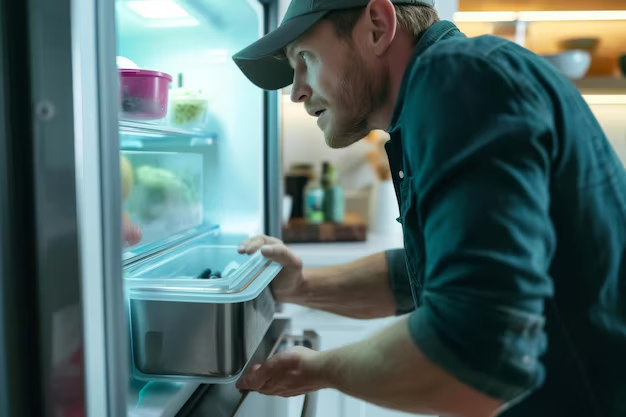Understanding Power Needs: How Many Watts Does a Refrigerator Use?
When setting up a new kitchen or planning for energy costs, knowing the power requirements of everyday appliances like your refrigerator can be incredibly useful. More than just a staple of modern living, refrigerators are one of the primary consumers of energy within a household. How much energy they actually use can vary widely depending on various factors such as size, model, and efficiency. In this comprehensive guide, we’ll dive into the details and offer practical insights on how many watts your refrigerator may need, alongside tips on maximizing energy efficiency at home.
🤔 Why Knowing the Energy Consumption Matters
Understanding energy usage is crucial for several reasons:
- Cost Management - Knowledge of energy consumption can directly impact your electricity bill. Every watt counts, especially over long periods.
- Energy Efficiency - Awareness leads to better decisions when choosing appliances, aiming for models that offer better energy efficiency.
- Sustainability - Reducing energy usage is beneficial for the environment, contributing to a reduction in overall energy demand and carbon footprint.
Unpacking Refrigerator Energy Use
Average Power Consumption
Typical refrigerators range in their energy consumption:
- Compact refrigerators may need anywhere from 100 to 300 watts.
- Standard-sized refrigerators often draw between 300 to 800 watts.
- Larger units or commercial models might require up to 1,000 watts or more.
The actual power consumption will depend on factors such as the refrigerator’s age, model, and energy efficiency rating.
Factors Influencing Power Usage
Several factors can impact how much energy a refrigerator uses:
- Size and Capacity: Larger refrigerators inherently use more energy due to greater internal space that requires cooling.
- Age of the Appliance: Older models are typically less efficient than newer ones designed to meet modern energy standards.
- Energy Star Rating: Appliances with higher energy ratings are designed to use less power while maintaining performance.
- Room Temperature: Refrigerators in warmer rooms will require more energy to maintain the desired internal temperature.
- Usage Patterns: Frequent opening and closing of the refrigerator can increase power consumption.
⚙️ Understanding Energy Efficiency Ratings
When choosing a refrigerator, the Energy Star rating is a reliable indicator of efficiency. Appliances with these certifications have proven to use less energy during operation, leading to cost savings over time. Higher-rated appliances might have a higher upfront cost but offer savings on energy bills in the long run.
Other Efficiency Metrics
- Annual Energy Consumption: Measured in kilowatt-hours (kWh), this figure gives consumers an idea of how much energy a refrigerator will use over a year.
- Energy Guide Labels: These yellow stickers provide a straightforward way to compare models based on energy use and associated costs.
🛠️ Practical Tips for Reducing Refrigerator Energy Use
Making a few smart adjustments at home can lead to significant improvements in energy efficiency:
- Set the Right Temperature: Keep your refrigerator between 35°F and 38°F, and your freezer at 0°F for optimal efficiency.
- Ensure Proper Seals: Regularly check the door seals to ensure they’re tight and free of tears. Leaky seals can let cold air escape.
- Limit Door Openings: Reduce the frequency of opening the refrigerator door to maintain internal temperature with less energy.
- Organize Effectively: A well-organized fridge allows quicker access, reducing the time the door needs to be open.
- Defrost Regularly: If your model requires manual defrosting, ensure it’s done periodically to maintain efficiency.
- Place in a Cool Spot: Avoid placing refrigerators next to heat sources like ovens and direct sunlight, to minimize extra cooling needs.
🤓 Did You Know?
Proper positioning can notably affect energy consumption. For example, leaving at least a one-inch gap around your refrigerator will help ensure proper air circulation around the unit’s condenser coils.
💡 Power Outages and Backup Energy Needs
Being prepared for power outages is crucial. Here’s how to ensure that your refrigerator will still function when needed most:
- Backup Generators: Calculate the total watts required to run essentials, and ensure your generator can handle it. For a refrigerator, considering peak wattage needs can help prevent energy overload.
- Power Inverter: When using a car battery or a solar power system, make sure the inverter can supply the necessary surge watts.
✔️ Key Takeaways
The following summary encapsulates the most practical tips and considerations:
⚡ Typical Power Needs: Compact models start at around 100 watts, while large or commercial ones can exceed 1,000 watts.
🌿 Energy Efficiency: Use the Energy Star rating and annual kWh usage as benchmarks for purchasing decisions.
💡 Cost-Saving Practices:
- Maintain optimal temperatures (35°F–38°F for the fridge, 0°F for the freezer).
- Check and maintain your appliance’s door seals.
- Be mindful of where you place your refrigerator to minimize extra energy loads.
🌀 Backup Solutions: Plan your backup power sources (generators or inverters) considering both continuous and surge wattage needs.
Understanding how much electricity appliances draw and how to reduce their energy footprint is a valuable way of both saving money and contributing to a more sustainable future. Armed with these insights, you can make informed choices that ensure functionality, efficiency, and sustainability are never mutually exclusive.
